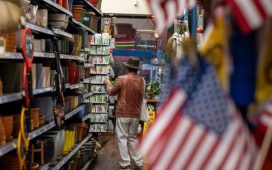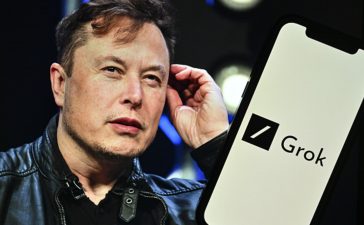The alarm bell that was ringing loudly last month is ringing even more loudly now. In December, the yield on three-month Treasury bills was 0.8 percentage point higher than the yield on 10-year Treasury notes, which at the time seemed huge. Now the spread has grown to 1.2 percentage points. That’s bigger than any previous gap in records maintained by the Federal Reserve Bank of St. Louis going back to 1982.
Jerome Powell and other Fed officials worry that if they stop raising rates now, or even slow the rate of increase too much, they won’t manage to get inflation back down to their target of 2 percent a year. It’s true that the monthly decline in prices in December was a one-off, caused mostly by a big decline in gasoline prices and airfares that won’t be repeated every month. Prices excluding food and energy rose 0.3 percent in December from November. Duy, the Fed watcher at SGH Macro Advisors, points out that while goods price inflation has tapered off, services inflation and wage pressures remain.
But the opposite risk is that the Fed will tighten too much. Fed officials are starting to take that risk into account. After making four consecutive giant-size increases in the federal funds rate last year, the Federal Open Market Committee put through a smaller hike in December and may go even smaller at its next meeting in February, judging from recent statements by committee members.
On the other hand, while Fed officials may be talking about slowing the rate of increases, they still seem more or less united about eventually getting the federal funds rate a bit above 5 percent, which is three-quarters of a percentage point higher than it is now. “The Fed needs to see clear, clear evidence that inflation has left the system in its entirety,” James Knightley, chief international economist for ING, told me.
Perhaps in part in reaction to the Fed’s hawkishness, the confidence of U.S. chief executives has collapsed. According to a Conference Board quarterly survey, in the spring of 2021 its aggregate measure of confidence was the highest since records began in 1976. By the fourth quarter of last year it had plunged to the lowest since the global financial crisis in 2009 — worse even than during the pandemic recession in 2020. If the chief executives act on their bearishness — not a certainty — they could start to cut back on advertising, equipment purchases and hiring, making their forecasts into a self-fulfilling prophecy.
Christina Romer, the outgoing president of the American Economic Association, said at the big economics conference in New Orleans this past weekend that based on her research with her husband, David Romer, Fed policymakers should not be surprised or frustrated that the interest-rate increases they’ve already put through have failed to slow the underlying inflation rate. Judging from experience, those past increases are likely to start slowing inflation — and raising unemployment — right around now.
“Policymakers are going to need to dial back” on raising rates before the problem of inflation is “completely solved,” said Romer, an economist at the University of California, Berkeley, who was chair of the President’s Council of Economic Advisers in the Obama administration. If instead they keep raising rates until inflation is utterly vanquished, she said, “they almost surely will have gone too far.”








